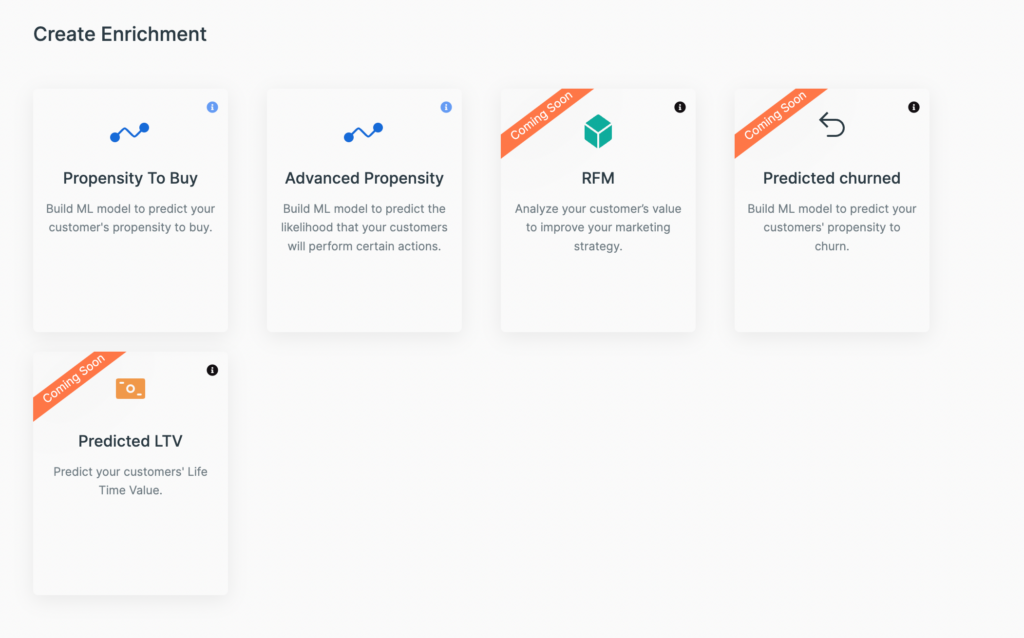In today’s digital marketing landscape, marketers are bombarded with customer data.
But how can you leverage this valuable information to identify high-potential customers and optimise your marketing efforts?
This is where propensity modelling comes in, acting as your strategic partner to unlock the full potential of your customer base.
What is Propensity Modelling and How Does it Work?
Propensity modelling is a statistical technique that analyses customer data to predict the likelihood of a specific event occurring.
In marketing, this event could be a purchase, subscription signup, or any other consumer behaviour.
Propensity models use machine learning algorithms to identify patterns in customer behaviour.
These patterns are then used to create a “propensity score” for each customer.
This score indicates the probability that a customer will take the desired action.
Why Marketers Need to Look Beyond Traditional Website Conversions:
- The Limitations of Traditional Targeting Methods: Traditional marketing strategies often rely on basic metrics like website clicks or demographics. While these metrics provide some insight, they don’t tell the whole story. A website visitor who clicks once might be more valuable than someone who visits multiple times but never converts.
- Unveiling the Potential of “Maybe” Customers: Propensity modelling allows marketers to identify consumers who are showing signs of interest, even if they haven’t converted yet, or who are showing signs or churning, even if they haven’t churned yet. By identifying these consumers before they take an action, you can tailor marketing efforts to nudge them toward the most desirable (and highest-value) action.
Propensity Modelling in Action: Targeting Key Segments
Identifying Valuable Customer Segments:
- Leveraging Customer Data for Propensity Scoring: Propensity models are built using historical customer data. This data can include demographics, purchase history, website behaviour, and past interactions with marketing campaigns. Just as website behaviour is tracked in ecommerce, physical stores can monitor customer actions using technologies like video analytics or Wi-Fi tracking. Propensity models in this context can analyse dwell time, movement patterns, and interactions with specific products or displays to gauge interest levels.
- Segmenting Audiences Based on Propensity: Once propensity scores are assigned, customers can be segmented into different groups based on their likelihood to take a desired action. This allows you to:
- Target High-Propensity Purchasers: Focus marketing efforts on customers most likely to make a purchase. This could involve sending personalised emails with exclusive discounts or showcasing relevant products based on their browsing history and past purchases. You can also leverage loyalty programs or membership schemes to share exclusive offers and promotions to identify or reward loyal customers in concert with propensity modelling.
- Identify Customers at Risk of Churn: Propensity modelling can also help identify customers exhibiting behaviours that indicate a high likelihood of churn. Participation in loyalty programs or membership schemes offers a wealth of data for propensity modelling and reducing customer churn risk. Analysing redemption rates, points accumulation, and engagement with exclusive offers also allows you to detect signs of waning interest. By proactively intervening with these at-risk customers, you can develop targeted retention campaigns and reduce customer churn risk.
Building Targeted Marketing Campaigns for Acquisition and Retention:
- Personalised Communication & Offers: Knowing your high-propensity customers allows you to tailor your marketing messages and offers. This could involve:
- Sending win-back campaigns with special offers to customers at risk of churn.
- Showcasing relevant products or services to high-propensity purchasers based on their browsing behaviour and past purchases.
- Optimising Resource Allocation: By focusing resources on high-propensity customers (purchasers or those at risk of churn), you can optimise your marketing budget and achieve a higher return on investment (ROI).
Benefits of Propensity Modelling for Marketers:
- Improved Customer Targeting & Retention: Identify high-value customers with a high propensity to purchase and proactively engage with at-risk customers to prevent churn.
- Data-Driven Marketing Decisions: Propensity modelling allows you to measure the effectiveness of your campaigns by comparing predicted outcomes (purchases or churn) with actual results. This data-driven approach helps track progress and optimise campaigns for better results.
Considerations for Implementing Propensity Modelling
Propensity modelling requires access and analysis of a significant amount of customer data, which can be complex to implement.
However, with AI, propensity modelling becomes much more achievable for the average business or marketing team.
AI-Powered Propensity Modelling with Wondaris
Wondaris, XPON’s proprietary Audience, Enrichment and Activation Platform, has pre-built RFM (Recency, Frequency, Monetary) and Propensity Models that can be leveraged to rapidly segment audiences based on their likelihood to purchase or churn.
With Wondaris, marketers can segment and activate these audiences with just a few clicks, turning data into accurate predictions to reduce wastage and drive more effective campaigns.
Conclusion: Propensity Modelling – A Game Changer for Data-Driven Marketing
In today’s competitive marketing landscape, propensity modelling is a powerful tool that empowers marketers to see beyond simple clicks and conversions.
By leveraging customer data and predicting customer behaviour, businesses can target high-value customers, win-back those likely to churn, optimise campaigns, and achieve sustainable growth.
